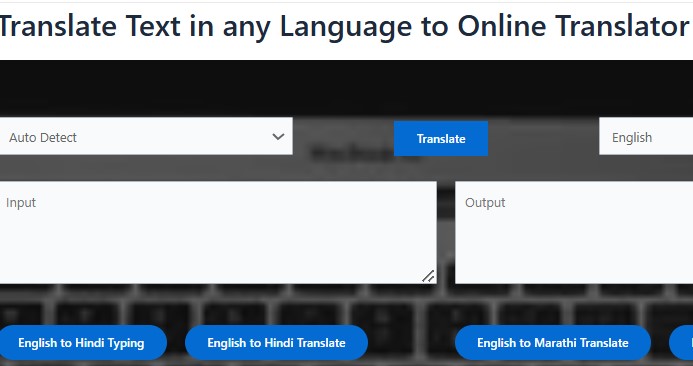
How Translation Tools Help Stenographers
- Categories Blog, Shorthand Tips
- Date January 6, 2025
Translation Effectiveness for Stenographers
Stenographers play a critical role in capturing spoken words quickly and accurately, whether in courtrooms, business meetings, or live events. Their ability to transcribe speech in real-time makes them invaluable in many industries, particularly in legal and judicial settings. However, as technology evolves, translation tools have become increasingly important in enhancing the efficiency and effectiveness of stenographers. These tools help them tackle language barriers, increase their speed, and improve the overall quality of their transcriptions.
Here’s how translation tools assist stenographers:
1. Breaking Language Barriers
One of the primary ways translation tools help stenographers is by overcoming language barriers. In international or multicultural environments, stenographers may encounter speakers who communicate in different languages or dialects. Manual translation in real time can be difficult and time-consuming, especially in fast-paced settings.
Translation software, such as machine translation and real-time translation apps, can instantly translate speech into the desired language. This allows stenographers to transcribe accurately without needing to be fluent in every language being spoken. In legal contexts, where the accuracy of every word is critical, translation tools ensure that the meaning of statements is preserved, even if they are delivered in another language.
2. Speed and Efficiency
Stenographers are already working at a remarkable pace, transcribing speech as quickly as it is spoken, often reaching speeds of 225 words per minute or more. Translation tools can further increase this speed by automating some of the processes involved in transcription. For instance, voice recognition technology can help stenographers transcribe speech more quickly by converting spoken words into text instantly.
Additionally, translation tools help by predicting words and phrases, reducing the need for stenographers to manually type each individual word. These predictive technologies, combined with translation tools, make it easier for stenographers to keep up with rapid speech, ensuring that no critical information is missed.
3. Improved Accuracy
Accuracy is paramount for stenographers, particularly in legal contexts where transcripts can be used as official records of proceedings. The challenge of maintaining high accuracy increases when transcribing different languages or complex jargon. Translation tools are designed to capture nuances in different languages, ensuring that context and meaning are preserved.
For example, some advanced translation tools incorporate context-aware algorithms that can identify homophones or words with multiple meanings, selecting the correct translation based on the context in which they are used. By helping stenographers navigate complex translations and specialized vocabulary, these tools improve the quality and accuracy of the final transcript.
4. Consistency in Transcriptions
Stenographers often work with multiple sources of spoken content, and maintaining consistency across different transcriptions can be challenging. Translation tools help standardize terminology, ensuring that words or phrases are consistently translated across documents. This is particularly useful in legal or medical fields where specific terminology must be used accurately.
Some translation tools can be customized with specialized dictionaries or glossaries, ensuring that the stenographer’s translations align with industry-specific jargon. By using these tools, stenographers can maintain a consistent and accurate transcription without having to repeatedly check for correct usage.
5. Language Learning and Training
For stenographers who work in multilingual environments, translation tools also serve as a valuable resource for language learning and professional development. By using these tools, stenographers can familiarize themselves with new languages or phrases, enhancing their ability to work in diverse settings. Training programs that incorporate translation tools can help stenographers gain proficiency in multiple languages and refine their transcription skills.
6. Collaborative Work in Global Settings
Stenographers working in international settings, such as global conferences or diplomatic meetings, benefit from translation tools that enable real-time communication between speakers of different languages. In these scenarios, stenographers can collaborate with interpreters and translators to ensure that all parties are accurately represented.
Some advanced tools even allow for the integration of multiple languages into a single transcription document, making it easier for stenographers to create multi-lingual records. This ability to streamline complex processes increases productivity and ensures that every speaker’s voice is captured, regardless of the language they use.
7. Enhanced Post-Processing
Once a transcription is complete, stenographers often need to refine and proofread their work. Translation tools can help with this process by providing suggestions for improving grammar, syntax, and style. Additionally, these tools can assist with creating bilingual or multilingual transcripts, saving time in the post-processing phase and allowing for quicker turnaround times.
Conclusion
Translation tools are reshaping the way stenographers work, helping them navigate multilingual environments, increase speed, and maintain accuracy in their transcriptions. By breaking down language barriers and providing real-time assistance, these tools ensure that stenographers can perform their roles with greater efficiency and precision. As translation technology continues to evolve, stenographers will find themselves equipped with even more powerful tools to help them meet the demands of an increasingly globalized world.



